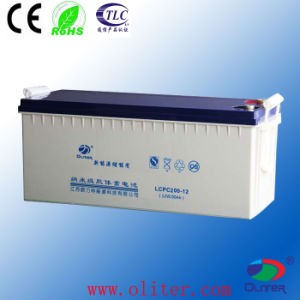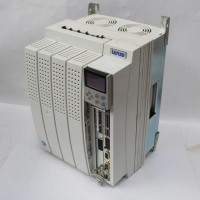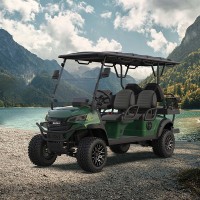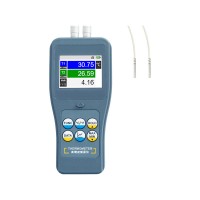-
Phone
86-18805257320
-
Address
No. 88 North Beihuan Road, Gaoyou Economic Development Zone, Yangzhou, Jiangsu, China
-
E-mail

Rechargeable Lead Acid Solar Battery 12V100ah with CE Approved
China 12V 200ah Deep Cycle Solar Battery with 20 Years Experience, Find details about China Battery, Solar Battery from 12V 200ah Deep Cycle Solar Battery with 20 Years Experience - Jiangsu Oliter Energy Technology Co., Ltd.
Description
- Model NO.: LCPA100-12
- Usage: UPS, Electric Power, Lighting, Solar System
- Discharge Rate: High Discharge Rate
- Electrolyte: Acid
- Rechargeable: Chargeable
- Size: 407*174*240mm
- Rated Voltage: 12V
- Self-Discharge: <3%/Month
- Max.Discharge Current: 30I10A (3min)
- Color: Bule and White
- Transport Package: Carton and Plywoodcase
- Origin: China
- Type: Lead-Acid Batteries
- Nominal Voltage: 12V
- Shape: Square Battery
- Installation: Fixed
- Model No: Lcpa100-12
- Weight: 31kg
- Cover Material: ABS Engineering Plastic
- 30%Dod: 2188times
- Max.Charge Current: ≤0.25c10
- Trademark: Oliter
- Specification: CE, TUV, ROHS, CGC, TLC, CQC...
- HS Code: 8507200000
Model No. :LCPA100-12
Weight :31 kg
Color :blue and white
Delivery time:7-10days
Packing :1PC/CTN
Guarantee: 3years
Designed life: 8-10 years
Certificate: CE, TUV, SGS, CQC, ISO9001,

Battery features:
- Sealed and maintenance free operation battery
- Non-Spillable construction design.
- ABS Containers and Covers (UL94HB), UL94V-0 optional.
- Safety valve installation for explosion proof.
- High quality and high reliability.
- Exceptional deep discharge recovery performance.
- Low self discharge characteristic.
- Flexibility design for multiple install positions.
- No memory effec
- Wide operating temperature range
| Max.Discharge Current | 30I10A (3min) |
| Self-Discharge(25ºC) | <2%/month |
| Using Temperature |
Discharge: -45ºC~50ºC Charge: -20ºC~45ºC Storage: -30ºC~40ºC |
| Recommended Using Temperature | 15ºC~30ºC |
| Max.Charge Current | ≤0.25C10 |
| Charge Voltage (25ºC) |
Float Charge: 13.5V-13.8V Average Charge: 14.4V-14.7V |
| Cover Material | ABS Engineering Plastic |
| Charge Mode(25ºC) |
Float Charge:2.275±0.025V/Cell Temperature Compensation Coefficient :±3 mV/Cell ºC Cycle Charge:2.45±0.05V/Cell Temperature Compensation Coefficient: ±5 mV/Cell ºC |
| Capacity Affected by Temperature |
105 % @ 40ºC 85 % @ 0ºC 60 % @ -20ºC |
| Cycle life | 100%DOD 1190times 50%DOD 2530times 30%DOD 3200times |
-Solar energy system,wind energy system, ups inverter system,
-Ups inverter system
-Garden light and street light system
-Portable VTR/TV, tape recorders, radios, etc.
-Power tools, lawn mowers and vacuum cleaners
-Cameras and photographic equipment
-Computers etc.
-Portable measuring equipment
-Portable telephone sets
-Various power toys and recreational equipment
-Lighting equipment
-Uninterruptible Power Supply
-Communications and electric equipment
-Emergency lighting equipment
-Fire alarms and security systems
-Various telemeter equipment

Factory

FAQ
1. What is the definition of "cycle use" and "standby use"?
"Cycle Use" - direct power source:
Cycle Use It can provide the power supply to power tools, and portable electronic products. It can also be used for cycling charging and discharging usage such as electronics motorbike or vacuum cleaner.
"Standby Use" - back up power:
Standby Use is mainly used for emergency power to avoid future damage that may be caused by a sudden power outage.
2. What are the concerns when using OLITER batteries in a parallel or a serial series?
1. Do not mix brands, models and date codes?
2. No separate discharge then charging in a serial configuration.
3. Under parallel usage, pay close attention to the differences in voltage in each circuit.
4. If the difference in voltage in each circuit is too high, do not charge/discharge as parallel.
5. The environment of all circuits must be similar.
3. How can you check a battery's performance?
Different usage applications will use different methods for evaluating a battery's performance. Using a 20 hour rate or the 10 hour rate, you can use 0.05CA or 0.1CA to discharge the battery until the battery reaches a terminal voltage of 10.25 volts. You can then calculate the amp hours to see if the battery fits the specifications or not. For a 5 minutes rate, such as the HC1221W, you can use a 21 watts/cell discharge till the terminal voltage reaches a terminal voltage of 9.6 volts and then measure the discharge time to see if it meets the final specifications or not.
4. How can the conversion be made between "watts (W)" and "amp hours (Ah)"?
W=I x V = 4I (15 minute rate) = 2CV = 2V
(Ex. HC1217W = 17/4 = 4.25Ah)<o:p>
5. When should a deep-cycle battery be used?
Deep cycle batteries are used when 50% or more of the capacity is used per cycle. The most common use
of deepcycle batteries is in applications that require deep, repetitive drain, like powerful car audio systems,
trolling motors, golf carts, electric wheelchairs, or RV house power sources. Public safety and high-performance vehicles are other applications that call for the special characteristics of deep-cycle batteries.
6. Does the deep-cycle battery have a "memory"?
No. The performance of deep-cycle batteries will be reduced over time, but deep-cycle batteries do not suffer from "memory effect" such as NiCd batteries do.
7. How are batteries rated?
Lead acid batteries are rated based on a capacity given in a defined time. There is not a set industry standard for how to rate a battery.
8. How long can a battery last?
The service design life of a battery varies considerably with how it is used, how it is maintained and charged, temperature, among other factors.
9. Do I need to add water to my battery?
No. Sealed lead acid batteries do not require the use of water.
10. What determines the life of a VRLA battery?
Sealed lead acid battery life is determined by many factors. These include temperature, depth and rate of discharge, and the number of charges and discharges (called cycles)










